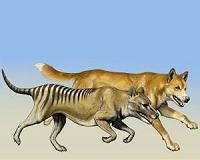 |
London, UK (SPX) May 05, 2011 New research has shed light on the origins of a fungal infection which is one of the major causes of death from AIDS-related illnesses. The study funded by the Wellcome Trust and the BBSRC, shows how the more virulent forms of Cryptococcus neoformans evolved and spread out of Africa and into Asia. Cryptococcus neoformans is a species of often highly aggressive fungi. One particular strain of the fungus - known as Cryptococcus neoformas variety grubii (Cng) - causes meningitis amongst patients with compromised immune systems following HIV infection. There are believed to over up to a million cases of cryptococcal meningitis each year, resulting in over 600,000 deaths. Infection with the fungus, which invades the central nervous system, is treated with a life long therapy of antifungal drugs, which can have highly unpleasant side effects. Sitali Simwami and Dr Matthew Fisher from Imperial College London, together with colleagues from St Georges, University of London, Naresuan University, Thailand, and the CBS Fungal Biodiversity Centre, The Netherlands, used genetic sequencing techniques to compare the genetic diversity of Cng in 183 samples taken from the clinic and the environment in Thailand against the 77 samples from a global database. Thailand has an emerging HIV epidemic and nearly one in five HIV-infected patients are affected by cryptococcal infection. "Cryptococcal meningitis kills hundreds of thousands of people each year, almost as many as malaria, yet gets little attention," explains Dr Fisher. "We know very little about where it originated from and how it evolved. If we can track its evolution and diversity, then we can begin to understand where the pathogen originates from, how it infects people and how it adapts to become more - or less - virulent. This information will be valuable in helping us identify potential therapeutic targets in the future." The researchers found that Cng in Thailand exhibits significantly less genetic diversity in comparison to other areas of the world, especially Africa where many different lineages of the pathogen occur. This suggests that populations of the fungus in Africa will have a wider spectrum of virulent strains and higher rates of adaptation to antifungal treatments, implying that clinicians need to pay particular attention to the risk of drug-resistant forms of the fungus here. Their analysis also suggested that the pathogen was introduced from Africa to Asia at some point within the last 7,000 years. Many human infectious diseases are thought to have emerged within the last 11,000 years, following the rise of agriculture and domestication of animals. In particular, it supports the idea that the pathogen was imported via infected pigeons, which were domesticated around 5,000 years ago. The common pigeon, which originated in Africa, is considered to be a carrier and potential spreader of the fungus, its faeces being a common environmental source of Cng.
Share This Article With Planet Earth
Related Links Darwin Today At TerraDaily.com
 Thylacine hunting behavior A Case of crying wolf
Thylacine hunting behavior A Case of crying wolfProvidence RI (SPX) May 05, 2011 Its head and body looked like a dog, yet its striped coat was cat-like. It carried its young in a pouch, like a kangaroo. No wonder the thylacine - the enigmatic, iconic creature of Australia and Tasmania - was the object of so much confusion, alternately called the "marsupial wolf" and the "Tasmanian tiger." So what was it? By studying bones of thylacines and 31 other mammals, researchers ... read more |
|
| The content herein, unless otherwise known to be public domain, are Copyright 1995-2010 - SpaceDaily. AFP and UPI Wire Stories are copyright Agence France-Presse and United Press International. ESA Portal Reports are copyright European Space Agency. All NASA sourced material is public domain. Additional copyrights may apply in whole or part to other bona fide parties. Advertising does not imply endorsement,agreement or approval of any opinions, statements or information provided by SpaceDaily on any Web page published or hosted by SpaceDaily. Privacy Statement |